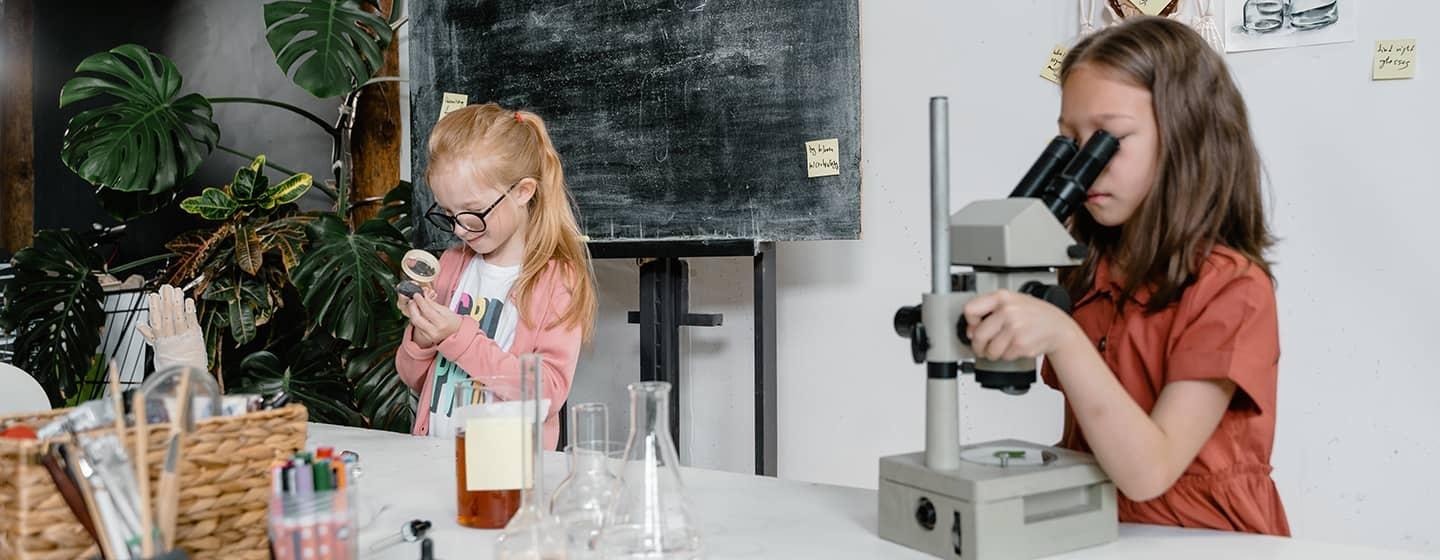Fueling Kids’ Imaginations May Help Address the STEM Gender Gap


The North Carolina Science Festival offers hundreds of science-related events and activities across the state for the entire month of April. It covers all fields of science for all knowledge levels, including opportunities for children to pretend to be scientists.
It turns out that pretending encourages children to pursue science fields. That’s especially true for girls.
It’s no secret that women are underrepresented in science, technology, engineering and math, or STEM, fields. Nationally, women made up 48% of the workforce in 2019 but just 27% of STEM workers.
However, a new study in the journal Psychological Science suggests that science role-playing among children may help girls better identify as scientists. And if the fascination with science continues, it follows that girls may pursue further study and careers in the sciences, and therefore help tighten the gender gaps seen in STEM education and career fields later in life.
This science role-playing study is a variation of what is known as the “Batman Effect,” in which students pretending to be superheroes did better at self-control tasks.
“I was teaching a class on the psychology of imagination and several students who are frustrated by the gap in STEM education approached me with the idea,” said Tamar Kushnir, Ph.D., Professor of Psychology and Neuroscience at Duke.
So Kushnir and several other researchers devised an experiment to test if assuming the role of a successful scientist would improve girls’ persistence in a “sink or float” science game.
The game itself was simple yet challenging: a computer screen projected a slide with an object in the center hovering above a pool of water. Kids then had to predict whether that object—be it an anchor, basketball, balloon or other object—would sink or float.
After making their choice, they learned if they made the right choice as they watched the object either plunge or stay afloat.
The researchers recruited 240 four- to seven-year-olds for the experiment. Earlier studies have shown this age span is around the time kids first develop their sense of identity and capabilities. That includes associations about science and gender, and the false notion that boys are more adept at science than girls.
Students were assigned to three different groups.
The baseline group was told they would be scientists for the day and then got to play the game.
Children in the “story” group received the same information, but before playing the game they were briefly taught about the successes and struggles of a gender-matched scientist. The boys learned about Isaac Newton, and girls learned about Marie Curie. There was also a two-question quiz after the story to make sure the students had paid attention. (They did.)
The last group, known as the “pretend” group, did everything the same as the story group, but they were also told to assume the identity of the scientist they had just learned about. Researchers even referred to them as such during the game (“What’s your prediction, Dr. Marie?”)
Everybody played one round of the game. They were then asked if they wanted to keep playing. Once finished, the students were asked to rate how good they thought they were at the game and as a scientist.
No matter what group they were in, both girls and boys got the same percentage of answers correct—about 70%. Boys, however, didn’t really benefit from the stories or make-believe.
“Boys were kind of maxed out,” Kushnir said. “They were about at ceiling performance no matter what we did.”
But the girls pretending to be Marie Curie were energized.
Without being exposed to Marie Curie, girls called it quits after six trials. However, girls pretending to be Dr. Curie persisted twice as long at the sink-or-float game, playing just as much as the boys did (about 12 trials on average).
While there wasn’t much benefit to just hearing a story about Marie Curie for extending game play, it did boost girls’ ratings of themselves as science gamers.
The study raises new questions, including would children benefit if they pretended to be scientists who were matched by race and ethnicity. (Most of the students in this study were white.)
“Our findings suggest we may want to take representation one step further,” said Reut Shachnai, a graduate student at Yale who took Dr. Kushnir’s Imagination course and worked on the study. “Rather than merely hearing about role models, children may benefit from actively performing the type of actions they see role models perform. In other words, taking a few steps in the role model’s shoes, instead of merely observing her walk.”
The North Carolina Science Festival provides opportunities to expose students to STEM and STEAM activities and allow them to be scientists. Click here for the festival calendar with 400+ events across the state.